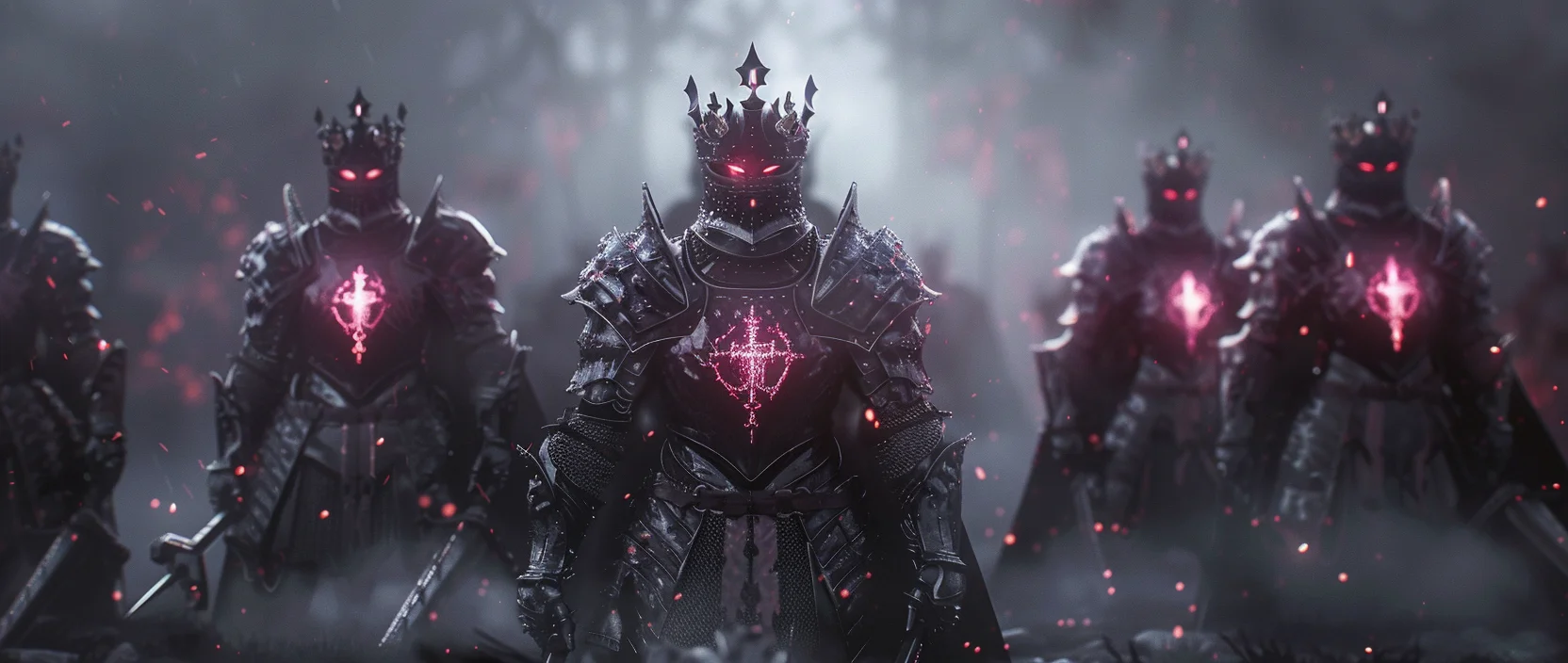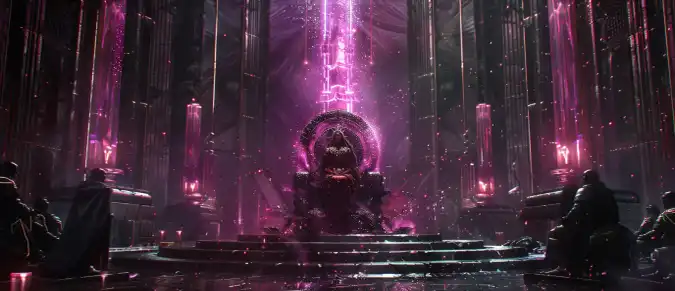Queen’s Knights is a Web3 game in the tactical strategy and RPG genre, where players assemble squads of knights, take part in PvP and PvE battles, and expand their digital collection of NFT characters and items. The project blends a fantasy setting, strategic depth, and a decentralized economy, creating a world in which digital ownership and gameplay progression are closely interlinked. Every action a player takes influences the structure of the game ecosystem, while progress is preserved in the form of real digital assets that can be traded, exchanged, and owned.
Contents
- World Concept and Story Foundation of Queen’s Knights
- Gameplay and Class System
- Economic Model and Tokenomics of Queen’s Knights
- NFT Characters and Collectible Items
- Community, Project Development and Future Prospects
- Conclusion

1. World Concept and Story Foundation of Queen’s Knights
The foundation of Queen’s Knights is a world undergoing a period of instability. The kingdom, once prosperous under the Queen’s reign, now faces threats from all sides. Hostile clans and ancient beings are awakening at its borders after centuries of slumber. Internal conflicts, competition for resources, and the ambitions of ruling houses generate tension that drives the story forward.
The player takes on the role of a commander of a knightly squad—warriors with unique abilities, traits, and personal histories. Exploring the game map, completing quests, and interacting with NPC factions gradually reveals the deeper drama of the world. Notably, the narrative structure is not strictly linear: many events unfold dynamically, and the player’s choices can alter available storylines and campaign progression.
Additionally, the Queen’s Knights universe is built with a strong sense of historical continuity—past choices leave an imprint and influence future events. The lore unfolds not only through quests but also through artifacts, item descriptions, and seasonal world events. This creates the feeling of a living world in which players participate in history rather than simply observe it. As a result, each gameplay session becomes part of a larger narrative slowly revealed to the player.
2. Gameplay and Class System
Queen’s Knights gameplay revolves around turn-based battles where strategic planning, role assignment within the squad, and tactical positioning are the key to victory. Each character has attributes that define their role in combat. Additionally, players can develop their stronghold, upgrade buildings, and access new technologies and resources used to improve equipment.
The class system allows players to create balanced or unique squads for specific goals:
- Tank — frontline unit that absorbs incoming damage.
- Mage — deals area damage and controls battlefield space.
- DPS Warrior — strong melee attacker with high offensive power.
- Support Healer — strengthens allies and restores health.
Players can experiment with class synergies to create strategies that vary in speed, aggression, and defensive strength. For example, survivability is key in PvE exploration, while PvP battles favor fast and aggressive team compositions. This flexibility enhances replayability and encourages players to refine their personal tactical style.
Additionally, character progression involves skill development and equipment upgrades, making progression multi-layered rather than linear. Over time, squads gain distinctive identities that reflect the player’s strategic habits and decisions.
3. Economic Model and Tokenomics of Queen’s Knights
The economy in Queen’s Knights is based on tokenized systems where in-game currency, resources, and items have real digital value. A limited emission model and resource recycling ensure economic balance.
| Economic Element | Role in the Game |
|---|---|
| Native Token | Used for trading, upgrades, and unlocking content |
| NFT Characters and Items | Represent digital ownership and retain value outside the game |
| Token Burning | Reduces inflation and maintains ecosystem balance |
| Player-Driven Marketplace | Creates a dynamic economy based on real supply and demand |
This economic structure promotes long-term player engagement rather than short-term speculation. The link between gameplay value and marketplace value prevents the game from becoming just a trading platform and preserves its strategic focus.
Additionally, the ability to form trading alliances and cooperative groups strengthens social engagement and helps establish independent in-game economic networks.

4. NFT Characters and Collectible Items
Characters and equipment in Queen’s Knights exist as NFT tokens, ensuring their uniqueness. Each knight has a combination of class, rarity, abilities, and visual design, which determine their combat efficiency and market value.
Collectible items include weapons, armor, magical cores, and relics. Some of these items are available only during seasonal challenges, encouraging players to participate actively in limited-time events. These items influence strategic options and serve as valuable collectibles.
Moreover, the item enhancement mechanic allows several NFTs to be merged into a rarer version, creating long-term goals and unique ownership stories linked to player accomplishments.
5. Community, Project Development and Future Prospects
The community plays a central role in shaping the future of Queen’s Knights. The developers actively communicate with players, gathering feedback and refining updates based on community interests. Regular AMA sessions, polls, guild activities, and competitive events strengthen the project’s social foundation.
Future development plans include:
- expanding PvP leagues and tournament systems;
- developing new storylines and campaign regions;
- integrating multi-blockchain asset compatibility;
- introducing tools for user-generated content.
The project is also exploring cross-game interoperability, which could allow players to use their assets beyond Queen’s Knights. This opens the door to a broader decentralized gaming ecosystem and reinforces the value of long-term digital ownership.
6. Conclusion
Queen’s Knights demonstrates a new approach to Web3 gaming where strategic thinking, digital value, and community interaction form a unified ecosystem. The game blends fantasy aesthetics, progression systems, and blockchain infrastructure, offering players meaningful ownership and creative freedom.
Supported by a flexible class system, a sustainable economy, and an active player base, Queen’s Knights has the potential to become a leading example of next-generation blockchain strategy games. Continuous content updates and expanding lore keep the world evolving, driven not only by developers but by its players—who help build the future of the realm.




